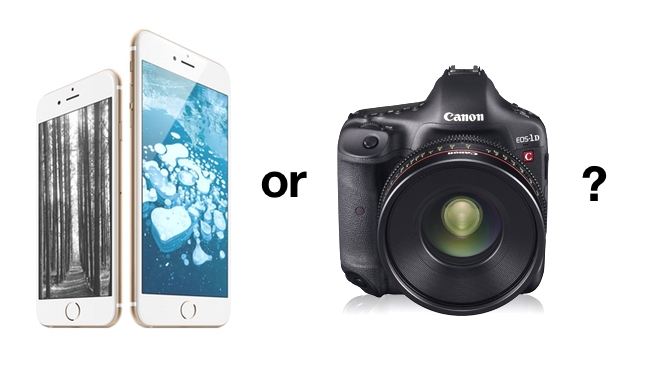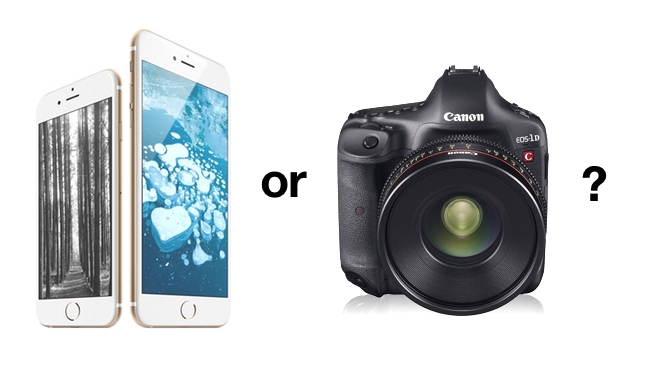
 The end of conventional cameras?
The end of conventional cameras?
Are we witnessing the end of traditional cameras?
The answer to this is either yes or no, depending on your definition of "traditional" and "camera". But there's definitely something going on.
One thing that has made me think about this is the fact that I'm constantly amazed at the quality of pictures you can take with a telephone. My iPhone 6 plus has become my default still camera. Even (or especially) on foreign trips, it's easily good enough to be the only camera I have with me. What's more, I've taken better, more spontaneous pictures with this phone than I have with almost any other camera.
There are exceptions. I love shallow depth of field (more for still photos than for video) and the creamy smoothness that you get with larger digital sensors (and analogue medium format cameras for that matter!).
But for virtually everything else, the iPhone is easily good enough.
But how on earth can a phone be responsible for such good photos? (And HD video for that matter!).
Well, it helps that Apple has more money in the bank than many small to medium countries. And it helps that the iPhone is by far their most profitable product. While that might not explain how they do it, it does perhaps account for their ability to put sufficient resources into the product to move ahead of the competitors.
But there's more to it than that. We're going to see some increasingly remarkable and effective alternative ways to create pictures than simply putting a single lens on the front of a camera.
There will be limits to the conventional way of taking pictures. We probably haven't quite reached those yet: it's likely that sensors and the digital signal processing behind them will improve further to the extent that even more is squeezed from the necessarily limited optical capabilities of a phone. (Although, as someone has just pointed out to me, the lens of a typical phone could be considered to be a PRIME lens!). DSP will be able to compensate for some of the imperfections in a lens - as long as they are known in advance - and other techniques like combining multiple rapid shots will add to resolution and dynamic range - the iPhone Six already has an HDR mode that kicks in automatically to deal with challenging lighting.
Beyond that, we may soon start seeing phones with multiple lenses and sensors. These will have an array of new capabilities. In addition to increased resolution, they'll be able to focus retrospectively (like the Lycos cameras) and probably output in 3D too. They may even be able to separate foreground and background objects to allow keying and all sorts of other depth-related tricks.
Ultimately, we will probably see this technology creeping into professional still and video cameras. To some extent it's already there: there are several camcorders with built-in lenses that take advantage of this non-swappability by digital compensating for known imperfections in the lens. If you take this technique to its limits, then cameras with digitally corrected optics will completely outshine those with conventional lenses and sensors.
This is what happens when a mass market profit drives technology that ends up in professional equipment. It used to be the other way round - but so many billions of dollars are tied up in the success or failure of mobile phones, that all the big money is going into development at the lower end of the market.
As professionals, all we have to do is sit back and wait for the changes to arrive. As a traditional camera manufacturer - I would be watching this trend very closely.
Tags: Business


Comments